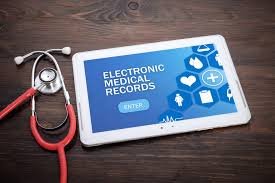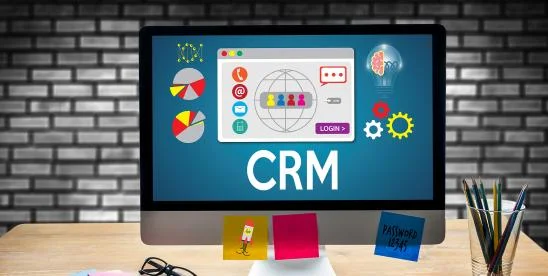The Product Development Lifecycle: From Idea to Launch The product development lifecycle is a strategic […]
Why Small Hospitals Need EMR

Learn why small hospitals and clinics need EMRs (Electronic Medical Records). Discover how EMR software improves hospital efficiency, reduces medical errors, enhances patient care, and helps small healthcare facilities compete in the digital age.
Introduction: Why Small Hospitals Can’t Ignore EMRs
Across India, small and mid-sized hospitals are the backbone of healthcare delivery. Whether it’s a 20-bed community hospital in a tier-2 city, a maternity clinic in a rural town, or a small surgical center in the suburbs, these facilities handle a majority of patient visits and primary care needs. Patients often choose small hospitals because of their accessibility, affordability, and the personal attention they receive.
However, many of these hospitals are still stuck with manual systems—paper-based records, handwritten prescriptions, physical files, and manual billing. While this has worked for decades, it creates growing problems: misplaced files, incomplete medical histories, billing disputes, staff inefficiencies, and in some cases, serious medical errors.
This is where Electronic Medical Records (EMR) software for small hospitals comes in. Once seen as a luxury reserved for big corporate hospitals, EMR systems have now become affordable, cloud-based, and scalable. For small hospitals, adopting an EMR is no longer optional—it is essential for survival, growth, and patient trust.
1. Streamlining Patient Records with EMR
One of the biggest challenges small hospitals face is maintaining accurate patient records. In traditional paper-based systems, files get misplaced, handwriting is often illegible, and retrieving old reports can take hours. This not only frustrates staff but also delays patient treatment.
With EMR software for small hospitals, all patient information is stored in one central, digital system. This includes demographic details, past medical history, prescriptions, diagnostic results, lab reports, and even imaging files. Doctors and nurses can pull up a patient’s complete record in seconds, even if the patient has visited multiple times over months or years.
For a small hospital with limited staff, this is a huge advantage. Instead of spending time searching for files or rewriting old prescriptions, doctors can focus on delivering faster, more accurate care. The improved efficiency also boosts patient satisfaction, since wait times drop significantly.
2. Reducing Medical Errors and Improving Safety
Medical errors are a global concern, and in small hospitals, even a single mistake can damage reputation permanently. Paper-based prescriptions are prone to misinterpretation, allergies are often overlooked, and follow-up reminders are rarely documented.
By using electronic medical records in hospitals, errors reduce drastically. EMRs offer:
-
Drug interaction alerts if a new prescription conflicts with a patient’s medication history.
-
Allergy warnings that pop up during prescription entry.
-
Standardized templates for prescriptions, lab reports, and discharge summaries, reducing ambiguity.
For small hospitals that depend on community trust, reducing medical errors is crucial. EMRs not only improve patient safety but also create a strong reputation for professional, reliable healthcare.
3. Enhancing Patient Care and Experience
Today’s patients are more informed and more demanding. They want digital access to their medical records, faster service, and transparent billing. Small hospitals that continue to rely on outdated systems risk losing patients to competitors who offer a modern experience.
With EMRs:
-
Patients can access their reports and prescriptions online.
-
App-based EMR systems allow patients to book appointments, pay bills, and receive follow-up reminders.
-
Doctors spend less time shuffling papers and more time listening to patients.
For example, a 30-bed hospital in Tamil Nadu adopted EMR software and reported a 25% reduction in patient waiting times. Patients appreciated the efficiency and began recommending the hospital to friends and family. This shows that better patient experience directly drives hospital growth.
4. Boosting Operational Efficiency with EMR
Running a hospital is not just about medical care—it also involves managing appointments, billing, pharmacy, inventory, insurance claims, and staff schedules. In small hospitals with limited manpower, these administrative tasks often eat into valuable time.
A well-implemented hospital EMR system integrates all these functions into a single platform. Appointment booking, billing, lab reports, and pharmacy are all connected. This eliminates duplicate work and reduces reliance on manual entries.
For hospital administrators, EMRs also provide real-time dashboards that show patient volumes, revenue collections, bed occupancy, and more. Instead of relying on guesswork, administrators can make data-driven decisions that improve hospital efficiency and profitability.
5. Telemedicine and Remote Access
Since the COVID-19 pandemic, telemedicine has become a permanent part of healthcare. Patients in rural and semi-urban areas now expect to consult with doctors remotely. Small hospitals can use cloud-based EMRs to offer telemedicine services without needing large infrastructure investments.
Doctors can log into the EMR securely from home, view a patient’s history, and conduct video consultations. Patients receive digital prescriptions via SMS, WhatsApp, or email. For small hospitals, this expands reach beyond physical boundaries, allowing them to serve new patients from nearby towns and villages.
This not only boosts revenue but also helps hospitals build a reputation for being tech-savvy and future-ready.
6. Regulatory Compliance and Legal Protection
Healthcare regulations are becoming stricter worldwide, and India is no exception. Initiatives like the Ayushman Bharat Digital Mission (ABDM) are pushing hospitals to adopt standardized digital health records.
EMRs help small hospitals stay compliant with these requirements by:
-
Maintaining accurate audit trails for every patient interaction.
-
Ensuring data is securely stored and easily retrievable for legal or insurance purposes.
-
Supporting integration with national health ID systems and government health schemes.
Hospitals without EMRs may face compliance challenges, financial penalties, or difficulty getting empaneled under government insurance schemes. Adopting an EMR ensures smooth compliance and legal protection.
7. Data Insights for Hospital Growth
For small hospitals, data is an untapped goldmine. Most administrators don’t know which departments generate the most revenue, which doctors see the most patients, or what seasonal diseases drive patient flow.
With EMR analytics, hospitals can access powerful insights such as:
-
Patient visit trends by month or season.
-
Treatment outcomes across departments.
-
Pharmacy and lab revenue contributions.
-
Common diagnoses and preventive health opportunities.
These insights allow small hospitals to optimize staff schedules, stock the right medicines, run seasonal health camps, and make informed strategic decisions.
8. Cost Savings and Financial Benefits
Many small hospitals hesitate to adopt EMRs due to cost concerns. However, paper-based systems are far more expensive in the long run. Misplaced records, manual billing errors, prescription mistakes, and excess staff time all add hidden costs.
Cloud-based EMR systems now operate on a subscription model, allowing hospitals to pay affordable monthly fees instead of heavy upfront investments. In most cases, EMRs pay for themselves within months by reducing waste, improving efficiency, and speeding up billing cycles.
In addition, EMRs support insurance claim processing, helping small hospitals capture revenue that may otherwise be delayed or denied.
9. Building Patient Loyalty and Reputation
In a competitive healthcare market, patients choose hospitals that offer both trust and modernity. A small hospital using EMR software signals that it values accuracy, safety, and convenience.
Patients are more likely to return when their medical history is preserved digitally and accessible anytime. They also recommend such hospitals to friends and family, driving word-of-mouth marketing. Over time, this builds a loyal patient base and enhances hospital reputation.
10. Future-Proofing Small Hospitals
Healthcare is rapidly evolving, with innovations like wearable health devices, AI-driven diagnostics, and government-backed digital health platforms. All of these require integration with EMRs.
Small hospitals that delay adopting EMRs will find it difficult to adapt to these changes later. By investing in an EMR today, small hospitals position themselves for future success, attract younger tech-savvy doctors, and stay ahead of competitors.
Conclusion: EMRs are Not a Choice, But a Necessity
Small hospitals have always carried the responsibility of delivering affordable, accessible care to communities. But in today’s digital-first world, relying on outdated paper-based systems is holding them back.
By adopting EMR software for small hospitals, they can:
-
Streamline operations and cut waste.
-
Improve patient safety and reduce errors.
-
Deliver faster, better, and more convenient care.
-
Stay compliant with government regulations.
-
Build long-term trust and growth.
For small hospitals, EMRs are not just about technology—they are about survival, growth, and delivering modern healthcare with confidence.
Related Posts
How a Digital Billing System Can Save 10+ Hours Every Week
- SparkITX
- June 18, 2025
- 5 min read
- 0
How a Digital Billing System Can Save 10+ Hours Every Week In today’s digitally-driven business […]
Red flags you need CRM
- SparkITX
- August 16, 2025
- 7 min read
- 0
Red flags you need CRM Red Flags That Show You Need a CRM Running a […]
Empowering Business Growth with Tailored Software Solutions.
- SparkITX
- April 29, 2025
- 4 min read
- 0
Empowering Business Growth with Tailored Software Solutions. Introduction: Why Tailored Software is the Key to […]




